Asystole
What is asystole?
The term asystole is a medical term. It describes the complete lack of electrical and mechanical heart action, so the heart stands still. Asystole is fatal within minutes if left untreated and requires immediate medical intervention. An asystole can be seen on the EKG. Clinically, it is shown by a missing pulse.
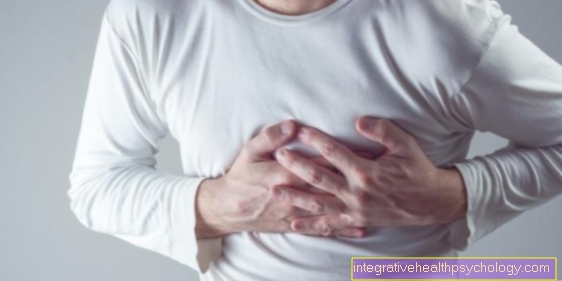
Causes of Asystole
In most cases it is not a primary asystole. Asystole is usually preceded by ventricular fibrillation. Ventricular fibrillation is a cardiac arrhythmia in which the heart no longer pumps in a coordinated manner due to a disturbance in the conduction of excitation, but only flickers very quickly. The actual function of the heart to pump blood through the body is no longer given.
Possible causes of such ventricular fibrillation are heart diseases such as coronary artery disease, heart valve defects, and cardiomyopathies. However, other diseases such as electrolyte disorders (especially potassium) or certain medications and drugs can trigger ventricular fibrillation.
It is not possible to name the causes of asystole in this way. This has to do with the fact that every dying patient has asystole at the time of death. The asystole can therefore always be seen in the last phase of the EKG in every dying person.
Read more about the topic here: Valvular heart disease
diagnosis
Asystole is a diagnosis made on the basis of an EKG. It is shown here by a zero line. This is due to the absence of any electrical or mechanical activity in the heart. Clinically, asystole is shown by a missing heartbeat and thus also a missing pulse. The pulse can be felt on the wrist, in the groin, on the neck and in numerous other regions. In the current resuscitation guideline, however, palpation of the pulse is not recommended in a resuscitation situation, as it can take longer for some patients to find the pulse and because palpation of the pulse is not sufficiently reliable in the acute situation.
Read more about the topic here: EKG
What does an asystole look like on the EKG?
Asystole is shown in the ECG by a so-called zero line. This means that there is a horizontal line on the EKG, where peaks and curves can normally be seen.
What does impending asystole look like in the EKG?
There is no impending asystole. However, many patients experience ventricular fibrillation before asystole. This is shown by uncoordinated, fast, irregular flicker waves in the EKG.
Concomitant symptoms
With asystole, the affected person is unconscious. Breathing has stopped and no pulse can be felt because the heart is no longer beating. The unconsciousness occurs after a few seconds of asystole. The patient may still experience vertigo-like symptoms at the onset of asystole. It then comes to one syncope, a fall due to a sudden loss of consciousness.
Treatment and resuscitation
The only effective treatment for asystole is attempting resuscitation. Especially when a patient is currently in inpatient treatment, is older and has other serious underlying illnesses, the possibility of such a situation should always be discussed with the patient and their relatives at the beginning. Here, the wishes of relatives and patients must be considered. Not all patients want resuscitation. If a patient speaks out against resuscitation in advance, then - in the worst case - it may not be carried out.
The procedure for resuscitation differs depending on whether there is ventricular fibrillation or asystole. Before starting the resuscitation, it must be checked whether the patient is responsive or breathing, then resuscitation is not necessary. In the case of lay resuscitation, it is essential that a call for help is made on 112 before resuscitation begins. Ideally, there are several people on site so that one can begin the resuscitation while the other makes the emergency call.
In the case of resuscitation, a distinction is made between cardiac massage with ventilation and defibrillation. The chest compressions are performed 30 times at a rate of about 100 / min, then ventilations are carried out twice. The chest compressions are more important than ventilation, this can be omitted by laypeople. The defibrillation takes place with an appropriate device (AED = automatic external defibrillator for laypersons or specialist equipment).Defibrillation, i.e. shock delivery, only takes place if the applied ECG shows ventricular fibrillation, not in the case of asystole. In asystole, resuscitation consists of chest compressions and ventilation cycles of 30: 2 each. The ECG is used to check the rhythm at regular intervals. If asystole is still present, this type of resuscitation is continued. If the asystole changes to ventricular fibrillation, defibrillation takes place. If the normal rhythm returns, an existing pulse should be felt and the patient should be spoken to.
In general, if a resuscitation is carried out by qualified personnel, a venous access is established immediately, but the resuscitation must not be significantly delayed. In the case of asystole, adrenaline is injected immediately. This is repeated every 3-5 minutes. In the case of resuscitation by specialist staff, the airways are also secured. There are various options for this, intubation is still the gold standard, but is no longer absolutely necessary today, as there are other options for adequate airway security (laryngeal tube, combination tube, laryngeal mask).
Resuscitation is successful when one can regain circulation.
Here you can find more information on the topics: Resuscitation and defibrillator
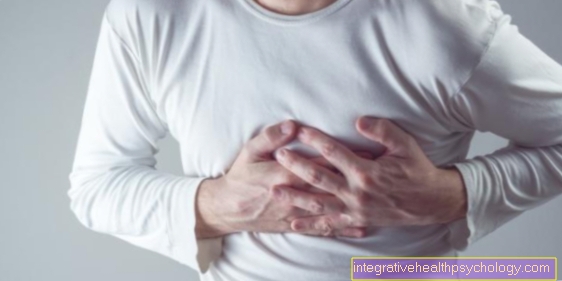
Who Needs a Defibrillator?
Only patients with ventricular fibrillation need defibrillation during resuscitation. Patients with asystole do not benefit from defibrillation. After surviving cardiac arrest, an important question is whether a defibrillator should be implanted. This is important insofar as the likelihood of suffering another cardiac arrest is significantly increased in patients who have already suffered one.
An implantable defibrillator (ICD) can detect life-threatening cardiac arrhythmias (ventricular fibrillation) and intervene. However, if a patient with an ICD suddenly develops asystole, the implanted pacemaker cannot help, as shock delivery is of no benefit if the heart is completely inactive. However, it is rare that asystole occurs primarily. Ventricular fibrillation occurs more often first. This can be ended by a defibrillator. The indication for implantation of an implantable defibrillator can be given in the following diseases:
- Condition after cardiovascular arrest
- Condition after a tachycardia ventricular cardiac arrhythmia (cardiac arrhythmia with too fast ventricular action)
- various forms of cardiomyopathy
- coronary artery disease / post-heart attack condition
- Heart failure with an ejection rate of the heart (EF) below 35%
- various cardiac arrhythmias (long QT syndrome, Brugada syndrome)
You can find further information on the topic here: Cardiac arrhythmias
Duration and prognosis of asystole
The prognosis for asystole is poor. Asystole lasting longer than a few seconds leads to unconsciousness. If it continues, the organs are no longer adequately supplied with oxygen. Prolonged asystole always leads to death. An asystole that lasted for minutes but could be ended by successful resuscitation carries the high risk of permanent brain damage due to an insufficient supply of oxygen to the brain. However, there are also patients who can be successfully resuscitated in asystole and do not retain any permanent damage.
The prognosis depends, among other things, on how quickly resuscitation measures are initiated. That is why lay resuscitation is extremely important. If resuscitation is not started until the emergency doctor arrives, the chances that the resuscitation will be successful are significantly smaller than if a sufficient lay resuscitation was carried out beforehand.
Course of disease
The course of the disease is fulminant. Asystole leads to a serious lack of oxygen in the brain within minutes. Untreated asystole is fatal within a few minutes.
What is the difference to ventricular fibrillation?
Ventricular fibrillation is a life-threatening heart rhythm disorder. The heart beats so quickly due to the uncontrolled spread of excitation in the heart that it can no longer pump adequately, but only flickers. If left untreated, ventricular fibrillation that does not limit itself leads to death. Ventricular fibrillation often turns into asystole.
In asystole, the heart - in contrast to ventricular fibrillation - no longer works. So an asystole is a cardiac arrest. The two disorders can hardly be distinguished clinically. In both cases the patient is unconscious and unresponsive. A pulse cannot be felt. Ventricular fibrillation shows up in the EKG through uncoordinated and irregular waves of flicker. In asystole, the ECG shows a zero line. Both disorders of the heart require immediate therapy (resuscitation), otherwise they are usually fatal.
While asystole has to be treated with adrenaline injection and cardiac massage as well as ventilation, ventricular fibrillation requires cardiac massage and ventilation as well as defibrillation to get the heart back into the right rhythm. In addition to adrenaline, amiodarone is also used in ventricular fibrillation.






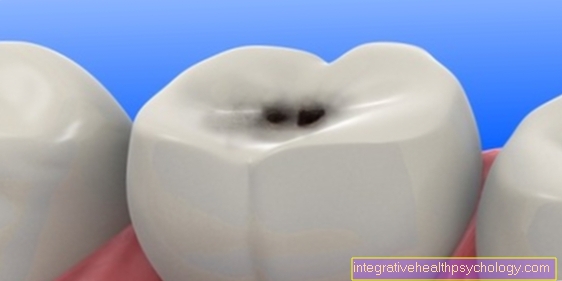





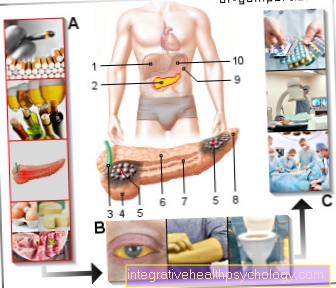





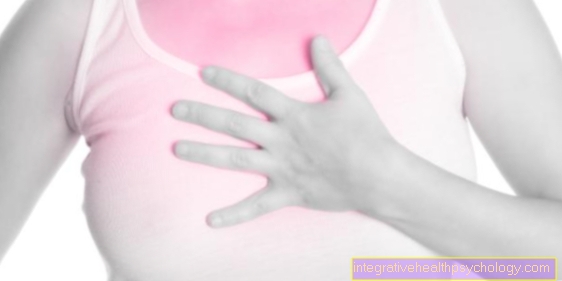
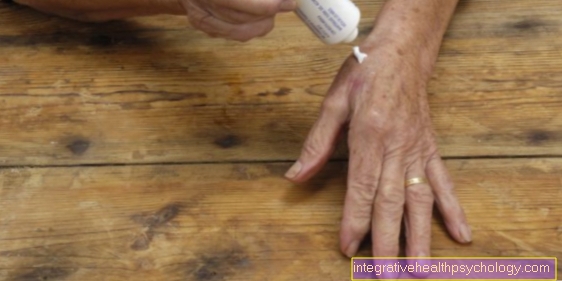
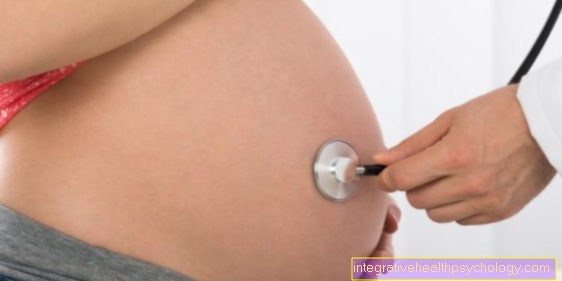


.jpg)





